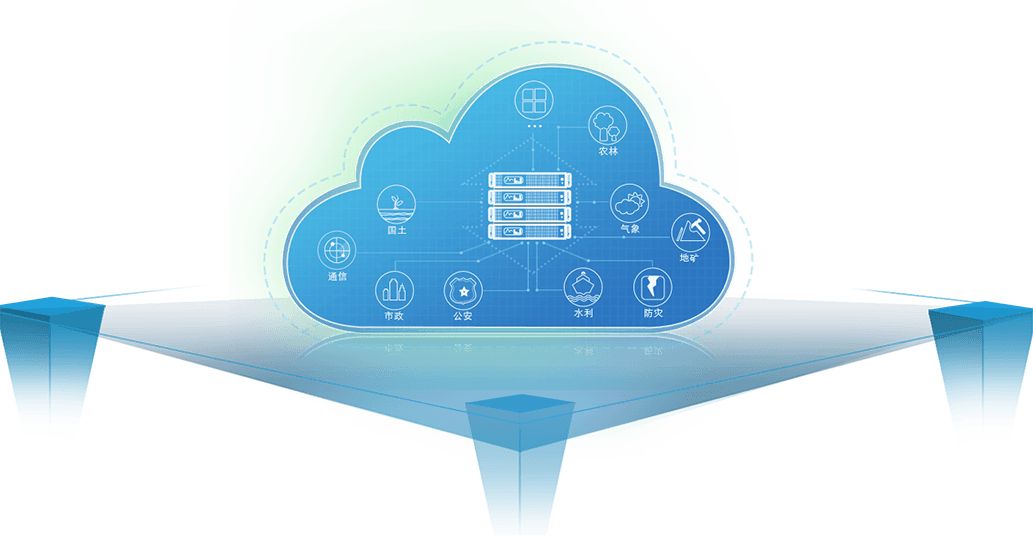What is enterprise cloud
Enterprise Cloud It is a commercial cloud system specially applied in the commercial field, which specially designs CRM (Customer Relationship Management) customer relationship management software, HR (Human Resource) human resource management software, Database database software and other enterprise internal systems for commercial companies to use. It is mainly targeted at enterprise oriented cloud applications, including domain cloud and industry cloud, and comprehensively covers public cloud for small and medium-sized enterprises and hybrid cloud for large and medium-sized enterprises. Among them, domain cloud includes financial cloud, procurement cloud, human cloud, treasurer and fund cloud, manufacturing cloud, marketing cloud, collaboration cloud, analysis cloud, etc; Industry cloud includes military cloud, construction cloud, pharmaceutical cloud, grain cloud, energy cloud, etc.

Value of using enterprise cloud
(1) Improve the utilization rate of the system. Cloud computing provides resource sharing, adopts virtualization technology, and has the ability to load balance to make full use of resources. (2) Automatic allocation, supply and management. Cloud computing uses automated management software to automate the management of various applications and operating systems, thereby reducing human management, simplifying management, and reducing human and management costs. (3) Increase IT flexibility. In the self-service mode, you can select the operating system, software, memory, storage, and CPU according to your needs. After automatic configuration, they are put into use. When they are not needed or when the direction of business development changes, they can be released or re selected. (4) High mobility. Adapt to the changes in customer information business, do not worry about the waste of one-time investment, and randomly allocate what you need according to the information needs. (5) Scalability. Like the cloud, resources can be freely expanded and allocated.
Six operation modes of enterprise cloud
Mode 1: Enterprise owned and self operated. This is a typical private cloud model, which is built and used by the enterprise itself. The basic resources are in the enterprise data center, and the operation and maintenance are also undertaken by the enterprise itself. Mode 2: enterprise ownership, operation and maintenance outsourcing. This is also a private cloud, but enterprises only invest in construction, while the operation and maintenance of cloud computing architecture is outsourced to service providers (or SPs), and the basic resources are still in the enterprise data center. Mode 3: enterprise ownership, operation and maintenance outsourcing, external operation. Private cloud is invested by enterprises, but the cloud computing architecture is located in the data center of the service provider. Enterprises access cloud resources through the network, which is a physical form of hosting. Mode 4: Enterprise leasing, external operation, and exclusive resources. The SP builds the basic cloud computing resources. The enterprise only rents the basic resources to form its own virtual cloud computing business, but the relevant physical resources are exclusively used by the enterprise. This is a virtual hosting service (data hosting). Mode 5: enterprise leasing, external operation, resource sharing and scheduling. It is built by SP. Multiple enterprises rent SP's cloud computing resources at the same time. The isolation and scheduling of resources are managed by SP. Enterprises only focus on their own business. Different enterprises are virtualized and isolated within the cloud architecture, forming a shared private cloud model. Mode 6: Public cloud services. SP provides enterprises or individuals with Internet oriented public services (such as mailboxes, instant messaging, shared disaster recovery, etc.). The cloud architecture is connected to the public network, and SP ensures the data security of different enterprises and users.
What are the characteristics of Kedao enterprise cloud
1. Lightweight, fast and easy to deploy
With the help of Kedao Cloud, the initial establishment and use of the private cloud platform can be completed in five minutes; Ajax+Json is used for data communication, with millisecond response speed; Full platform compatibility and low requirements for hardware facilities help enterprises tap the potential of existing hardware and reduce deployment costs.
2. Localized user experience
It follows the Windows operating interface and custom mode, and has an operating experience that is completely consistent with the local experience. Users can adapt without learning. It is the Xiaomi system in the private cloud, which has revolutionized the interaction mode of the traditional private cloud. Online operation, local experience. It supports online preview and playback of more than 100 formats, including documents, multimedia, engineering drawings and vector drawings, online editing of text documents and office documents, online programming, document sharing, offline downloading and other functions.
3. Strong applicability and many application scenarios
Full platform compatibility: Win, Linux, Mac (Apache, Nginx, IIS). From smart router and box products at the level of 100 yuan, to NAS network storage devices, to server panels, servers, hardware integration, ERP integration, private cloud, public cloud, SaaS service building and other scenarios can be easily applied.
4. Controllability and safety
Support private cloud LAN deployment, diversified group and user permission setting and management; A variety of encryption, protection and mandatory reminders are adopted to enhance security.
5. Highly customizable and expandable
On the one hand, KodExplorer software has built in plug-ins and application markets, providing strong scalability for private clouds; On the other hand, Kedao Cloud provides an open API interface, so that users can easily dock and customize development according to their own needs.
